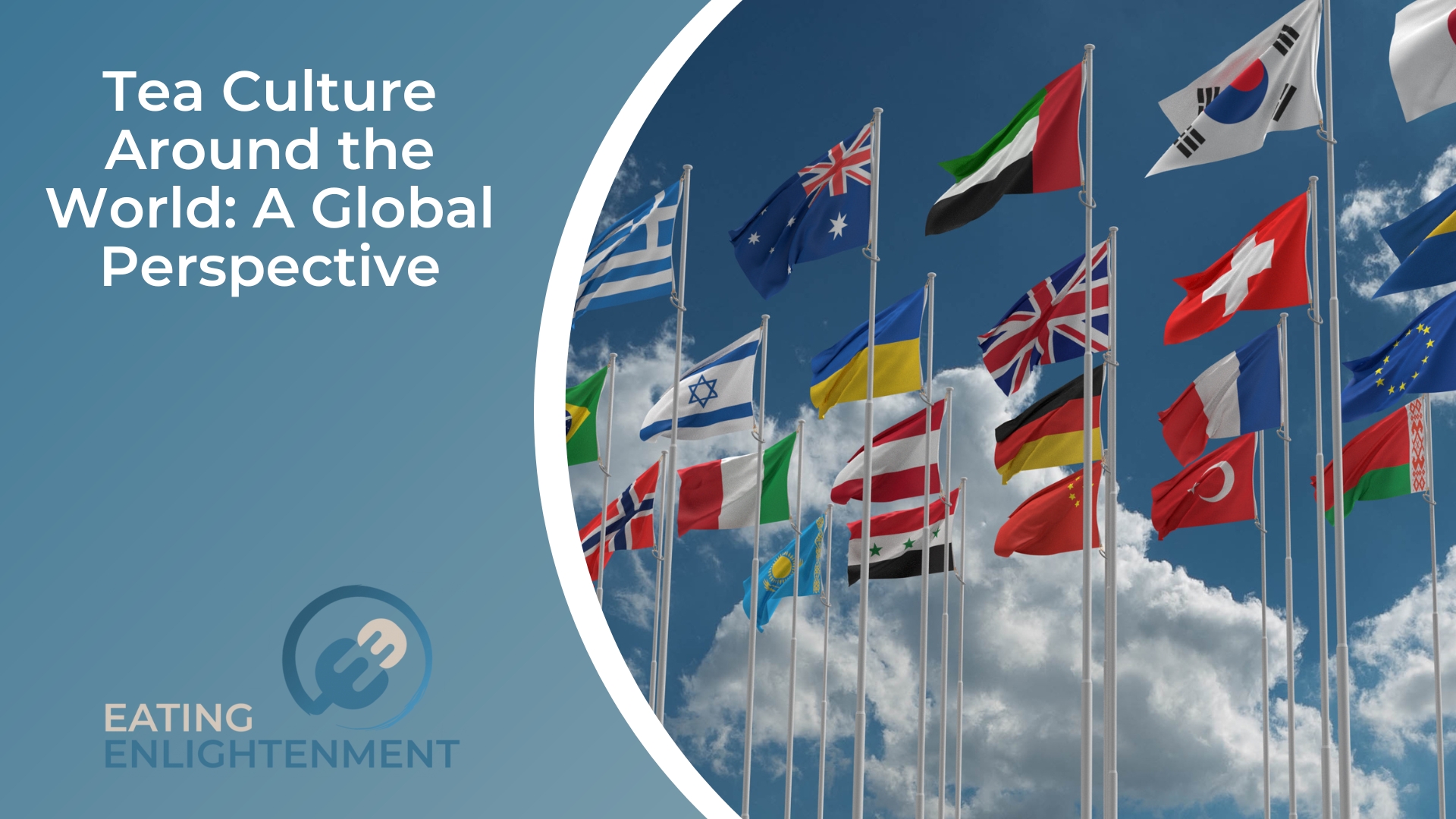Tea is a universal thread that connects cultures across the globe, from the hills of China and India to the streets of London and the serene gardens of Japan. With its diverse flavors and brewing techniques, tea has captured the hearts of people worldwide. Join us on a journey to explore the customs and ceremonies that have shaped the vibrant world of tea, reflecting the values and traditions of different regions throughout history.

Asia: The Birthplace of Tea
Asia, the birthplace of tea, has a rich history spanning millennia. It started as a medicinal drink and evolved into a beloved daily beverage, symbolizing ritual. In China, tea is intertwined with poetry, painting, and philosophy, embodying the essence of the scholar. The famous loose leaf Japanese teas such as sencha, matcha, and genmaicha all trace their origins back to China. The Japanese tea ceremony, known as ‘chanoyu,’ emphasizes harmony, respect, purity, and tranquility, reflecting a Zen-like mindfulness.
India’s vibrant chai culture is an integral part of daily life, where the spicy-sweet brew is enjoyed amidst lively conversation. The Taiwanese creation of bubble tea has sparked a modern tea culture, blending tradition with innovation. Throughout the continent, tea serves as a medium for social connection, spiritual reflection, and artistic expression.
Middle East: The Ritual of Tea
In the Middle East, tea is not just a beverage; it’s a hospitality ritual embedded in tradition. Known as ‘chai’ locally, tea holds a significant role in Arab culture. It is customary to welcome guests with hot, sweetened black tea warmly. The tea preparation and pouring involve specific customs, including offering the first cup to the eldest guest.
In Turkey, tea plays a central role in daily life, and its preparation is an art form. Brewed in a two-tiered teapot called a ‘çaydanlık,’ Turkish tea is served strong and hot in delicate glasses with sugar cubes on the side. The ritual of sharing tea is an essential part of socializing, often accompanied by Turkish delight and lively conversation.
Europe: The Evolution of Tea
Tea arrived in Europe in the 17th century, initially used for medicinal purposes. It was in the 18th century that tea became a fashionable drink among the British aristocracy, leading to the creation of afternoon tea. This tradition continues to this day, with elaborate spreads of sandwiches, scones, and pastries served alongside a pot of hot tea.

Tea is integral to Russian culture, brewed using the unique ‘zavarka’ method. The Russian samovar, a traditional heated vessel, symbolizes warmth and hospitality. In France, tea is commonly enjoyed with meals, often favoring floral and herbal blends. The European tea culture is diverse, with each country adding its unique touch to this global drink.
Americas: The Rise of Tea
While coffee may reign supreme in the Americas, tea has steadily gained popularity in recent years. In North America, iced tea is a refreshing summer drink, and high-quality loose leaf teas are becoming more accessible. South America’s Mate tea has a long history as a social beverage and is enjoyed throughout Argentina, Uruguay, Paraguay, and Brazil.
In Central America, traditional herbal teas made from local plants and fruits are still widely consumed for their medicinal properties. In the Caribbean, hot tea is a welcome respite from the tropical heat, often accompanied by snacks or pastries. The rise of tea culture in the Americas highlights its adaptability and acceptance in diverse cultures.
Africa: The Unique Tea Blends
Tea has traveled far and wide, with unique blends and customs in Africa. In North Africa, the popular mint tea is known as ‘Moroccan Whiskey’ for its strong flavor. Kenya and Tanzania are major players in the global tea market, producing some of the finest black teas. Rooibos tea from South Africa has gained international acclaim for its antioxidants and distinct flavor.
Tea drinking in Africa is a fusion of cultural influences, from colonial legacies to indigenous traditions. The continent’s vibrant tea culture reflects its diverse landscapes, people, and histories, showcasing how tea continues to evolve and adapt to new environments.
Oceania: The Emerging Tea Traditions
Oceania, with its remote islands and lush rainforests, has a unique tea culture that is only just emerging. In Australia, traditional Aboriginal teas made from native plants have gained popularity for their medicinal properties. The Maori in New Zealand also have their traditional tea blends, incorporating indigenous herbs and spices.
In the Pacific Islands, kava tea plays an essential role in ceremonies and social gatherings, representing unity and community. As tea continues to spread its roots in Oceania, we can expect to see more diverse blends and traditions emerging from this region.
Tea is more than a beverage. It’s a tradition that binds communities, a ritual that invites pause, and a taste of home that connects us to distant cultures. Drinking tea worldwide is a profound demonstration of our shared human experience. A warm cup can bridge gaps between languages, borders, and generations. So, wherever you are, raise your cup and join us in a global toast to tea – cheers, or as they say in Japanese, ‘kanpai.’



